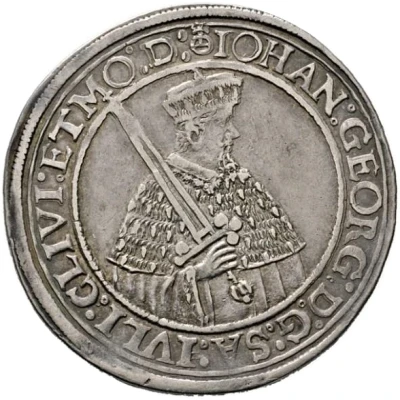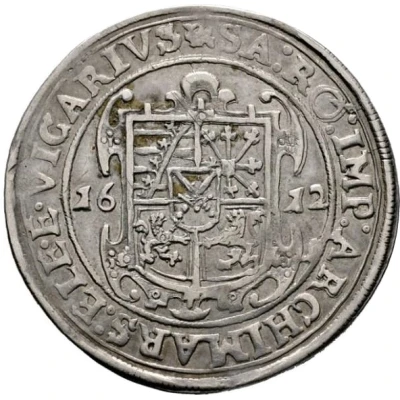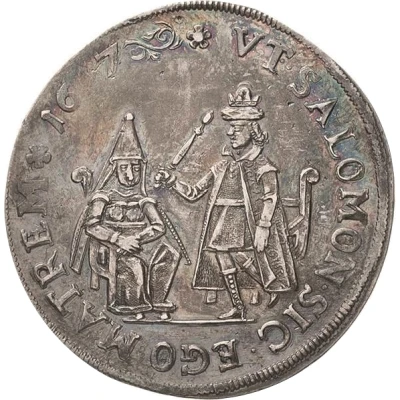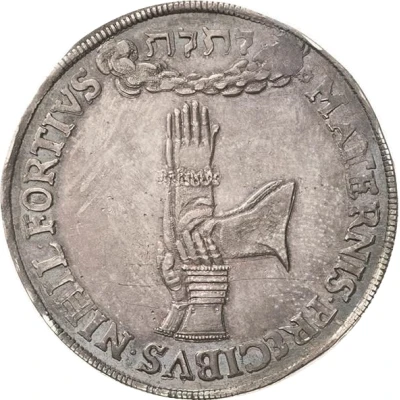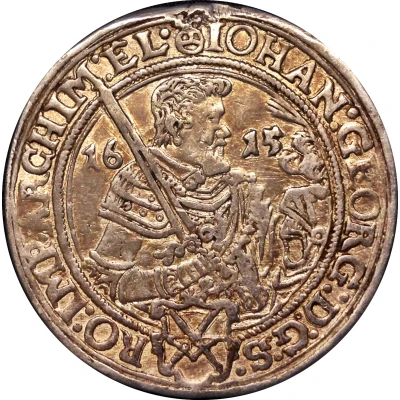
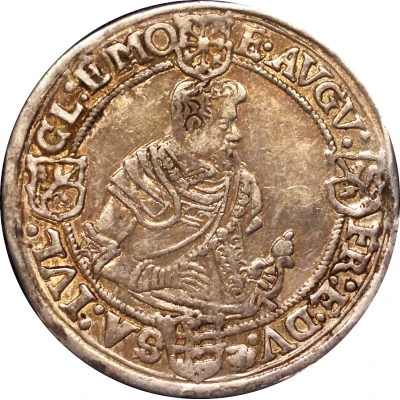

© Christoph Schenk
½ Thaler - John George I
| Silver (.889) | 14.16 g | 37.6 mm |
| Issuer | Electorate of Saxony (Albertinian Line) (German States) |
|---|---|
| Prince elector | John George I (Hans Georg I) (1591-1656) |
| Type | Standard circulation coin |
| Years | 1612-1616 |
| Value | ½ Thaler |
| Currency | Thaler (1493-1805) |
| Composition | Silver (.889) |
| Weight | 14.16 g |
| Diameter | 37.6 mm |
| Thickness | 1.4 mm |
| Shape | Round |
| Orientation | Medal alignment ↑↑ |
| Demonetized | Yes |
| Updated | 2024-10-05 |
| Numista | N#85245 |
|---|---|
| Rarity index | 97% |
Reverse
Portrait of August in armour with hand at the sword facing right.
Coats of arms of Cleve, Berg, Saxony and Jülich top, right, bottom and left.
Mint mark swan near the Saxonian coa of arms
Script: Latin
Lettering: E·AVGV: FR.E·DV SA:IVL· CL:EMO
Translation:
ET AVGVSTVS FRATRES ET DVCES SAXONIÆ IVLIACI CLIVIÆ ET MONTIVM
and August, brothers and Dukes of Saxony, Jülich, Cleve and Berg
Engraver: Heinrich von Rehnen
Interesting fact
One interesting fact about the ½ Thaler coin from the Electorate of Saxony (Albertinian Line) is that it was minted during a time of great economic and political change in Europe. The coin was issued during the reign of John George I, who was the Elector of Saxony from 1612 to 1616. During this period, the Holy Roman Empire was facing economic challenges, including inflation and debasement of the currency. The ½ Thaler coin, made of silver with a purity of .889, was an attempt to address these issues by introducing a new coinage system that would stabilize the economy and promote trade. Despite these efforts, the coin's value fluctuated over time due to the ongoing economic instability in the region. Today, the ½ Thaler coin is a rare and valuable collector's item, providing a glimpse into the complex economic and political history of early 17th-century Europe.
